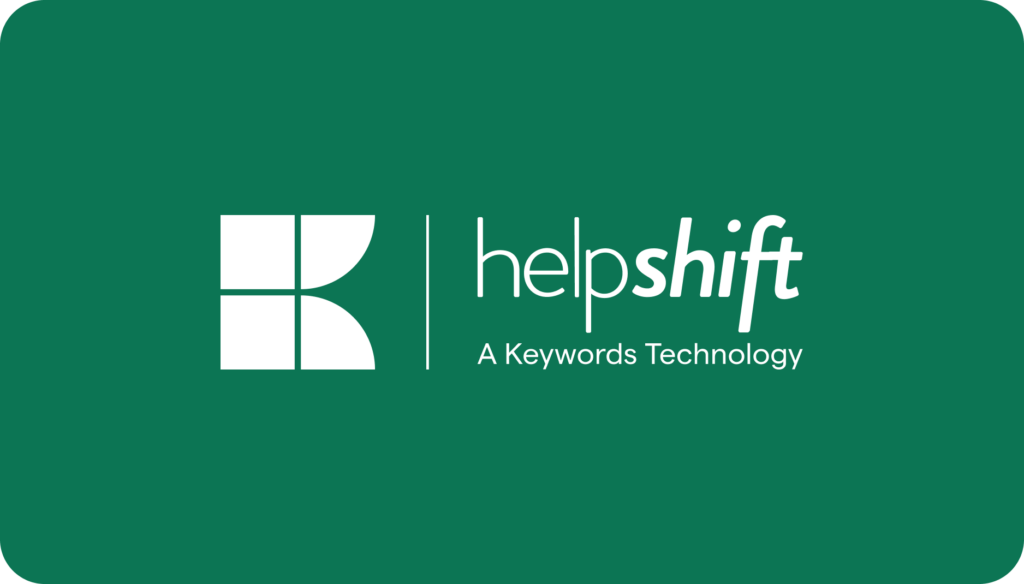Efficient customer service is important, both in terms of revenue growth and customer satisfaction. According to Salesforce report, 75% of customers say they have recommended a company based on excellent customer service. This data underscores the importance of customer service efficiency. When companies use technologies like AI and chatbots, they can empower more customers to solve their queries quickly through self-service or speed up issue resolution time through partial automation, allowing agents to focus their time on more complex tasks and queries. When optimized, upwards of 90 percent of customer support issues can be resolved with automation.
To realize these gains in customer service efficiency and productivity, brands have begun to use modern customer service platforms that incorporate all the necessary technologies and tools – in particular, AI-driven bots and automation. The trend was recently called out by Forrester Research. According to Forrester’s recent Customer Service Megatrends analysis, automation and AI allow organizations to manage the ballooning volumes of interactions across an increasing number of channels.
Benefits of Customer Service Efficiency
1. Enhanced Customer Satisfaction
Providing quick and effective solutions greatly boosts customer satisfaction. Self-service lets customers access the support they need instantly. When customers receive timely responses and resolutions, their overall experience improves, reducing frustration and increasing their likelihood to leave positive reviews and return for future interactions.
2. Increased Customer Loyalty
When support processes are smooth and effective, customers are more likely to remain loyal to the brand. Additionally providing multilingual support make global customers comfortable.
Satisfied customers who receive prompt assistance are not only more likely to make repeat purchases but also to recommend the company to others, driving organic growth and strengthening the customer base.
3. Reduced Operational Costs
Streamlining customer service operations minimizes the need for extensive human resources and reduces inefficiencies. Automation of routine tasks and optimized workflows help lower costs, allowing businesses to allocate resources more effectively and invest in other strategic areas.
4. Higher Employee Morale
A well-organized support system alleviates stress and boosts job satisfaction among employees. When staff members can focus on complex, meaningful tasks rather than repetitive issues, they feel their skills are better utilized and their contributions are more valued, leading to higher morale and engagement.
5. Improved Brand Reputation
Consistently delivering high-quality support enhances a company’s reputation for reliability and responsiveness. A strong reputation for efficient service differentiates the brand from competitors, attracts new customers, and retains existing ones, reinforcing a positive brand image in the marketplace.
6. Faster Issue Resolution
Quick resolution of customer issues prevents minor problems from escalating into major complaints. Intent recognition kind of capability helps enhance customer service efficiency. Efficient processes ensure that inquiries are handled swiftly, reducing downtime and enhancing the overall customer experience by providing timely solutions.
7. Enhanced Scalability
As a business grows, having streamlined support systems in place allows for effective scaling. Well-designed processes and automation can handle increased customer interactions without a proportional increase in support costs, maintaining service quality even as demand rises.
8. Valuable Insights and Analytics
An efficient customer service system generates valuable data on customer behavior and preferences. Analyzing this information helps businesses identify trends, understand common issues, and make data-driven decisions to refine their support strategies and improve service quality.
How can you realize efficient customer service with modern tools?
A modern customer service platform comes with significant capabilities and horsepower to run any sized customer service organization. To apply the technology correctly for optimial efficiency, you should focus on four key areas of customer service operations:
- AI and Automation
- Self service
- Agent enablement
- Introduction of new channels
Let’s take a look at each.
1. AI and Automation
Automations, driven by AI, have become table stakes in delivering customer service efficiency and productivity gains. It is compelling, because you can achieve so much via automation, even with a small customer support operation. Automations eliminate repetitive tasks and improve customer satisfaction by ensuring that customers are always directed to the best resource, whether that is knowledge base content, a bot, or a live agent.
With a modern CS platform, building bots is simple and quick. Bot-building functions provide visuals for automating interactions in ways that follow the customer journey, and since no coding is required, anyone can build a bot that automates workflows for their specific use case. They can even test new automations instantly to ensure they did it right.
AI-powered issue classification labels issues and triggers automated routing to the right agent or bot, eliminating the need for manual steps, such as ongoing keyword-based tagging. To see how easily you can create your own automated workflows with bots, read our Beginner’s Worksheet for Building Customer Service Bots. Users with no previous experience building bots for in-app support have automated up to 70 percent of incoming issue management processes.
For a more comprehensive overview of intelligently automating customer service, visit our AI and automation page.
2. Self service
Today, most customers prefer to resolve their own issues using quick links to knowledge base content or having a quick discussion with a chatbot that can point them in the right direction. This is great news for efficiency goals, because you can simply load up your knowledge base with the wide variety of information you already have – articles, videos, etc. – and let your bots lead users on their way.
With knowledge bases available online and directly within apps, your organization gains always-on self-service, and management can pursue global and multichannel strategies, knowing that cost-efficient support is built right into them. Here’s a helpful overview to get you started with your own knowledge base or to optimize the one you already have. The results can come quickly and with high ROI.
3. Agent enablement
Your customer service agents are most productive when the information they need is made available to them at the specific moment they need it. You can leverage the unified dashboard of a modern CS platform to give agents a single view for managing their tickets. At a minimum, a dashboard should provide agents with fast access to each ticket’s data, channel context and interaction history.
Once you gain comfort with dashboard basics, you can jump to using AI and bots to present agents with far more context, such as the purchase history of the customer, their value to your organization and even hints for up-selling the individual upon resolving their issue.
From a pure efficiency standpoint, better dashboards and context reduce number of tedious tasks agents must perform.
4. Introduction of new channels
We’re living in a multichannel world, and modern customers quickly become disillusioned if customer service is not strong in their preferred channels. When using a modern CS platform, you can easily introduce new support channels that align with customers’ channel preferences. In-app knowledge bases and in-app messaging let mobile app users get the help they need without ever moving to another channel. Even if they do, the metadata collected within your SDK gives your bots and agents the context they need to resolve issues at maximum speed and efficiency.
Whether your customers need support in your app, website, phone or even third-party channels like Apple Business Chat or Google’s Rich Communications Services, the bots and automations inherent in a modern CS platform allow you to combine support across all channels. The flexibility to serve so many digital channels simultaneously and in a unified way is a shift in how you can serve all customers efficiently. To delve into the wide range of possibilities, check out our Digital Channels page.
Conclusion: Tracking your efficiency gains
After implementing the above tools, the fun part of using a modern CS platform becomes discovering just how much more efficient your CS operations have become through tracking and reporting on key metrics. A modern analytics dashboard provides the right metrics and views to see how you have improved customer service efficiency. For example, you can set time parameters to view open issue volume based on your specific channel, app, platform or language.
Other popular metrics Helpshift customers measure on an ongoing basis include the following:
- Types of users helped (Paying, non-paying, VIP, etc.)
- Types of issues submitted (Feedback, bugs, etc.)
- The volume used of each support tool (Help, FAQ, videos, etc.)
To improve customer service efficiency in the best way possible, you will want to combine metric measures. For instance, if your ‘Reported Issues’ are measured to total just 10% of ‘Initiated Help’, then you can celebrate that you have deflected 90 percent of potential support issues via your knowledge base content.
These data insights enable you to visualize the effectiveness of your customer service responses, knowledge base content pieces, individual agents and more. Having this capability will enable continuous improvement to your customer service efficiency and productivity.
Want to learn more?
- Blog Post: How Self-Service Automation Elevates the Customer Experience
- Additional Product Information: Helpshift’s Intelligent Customer Self-Service




